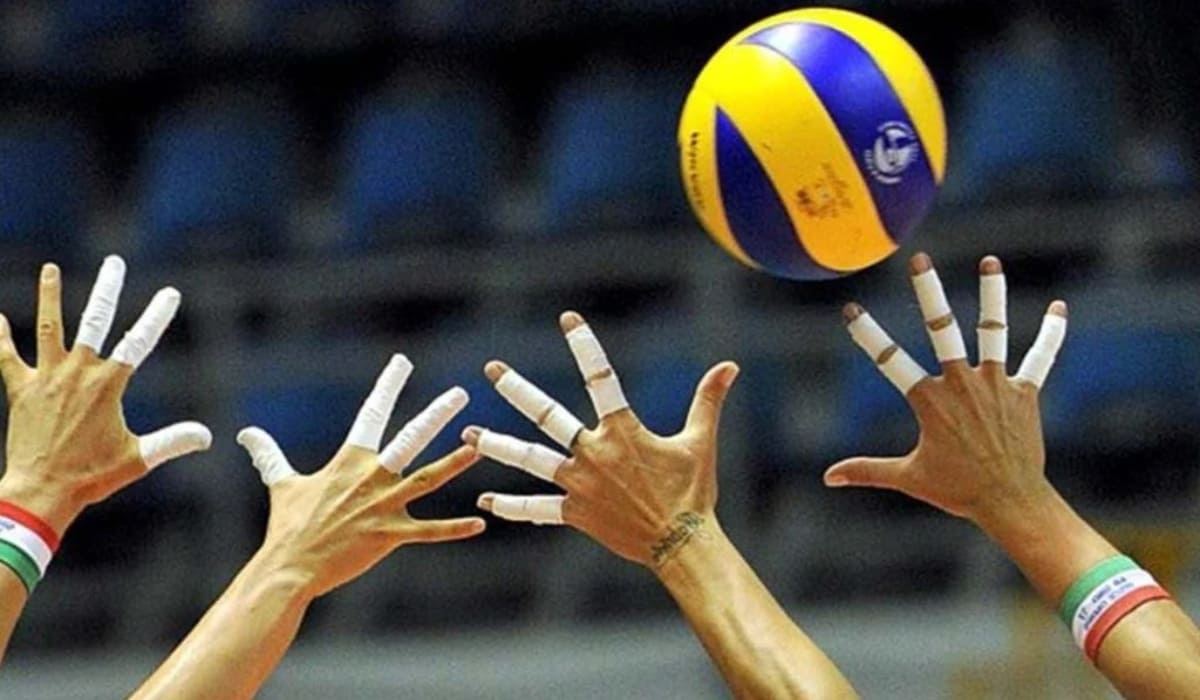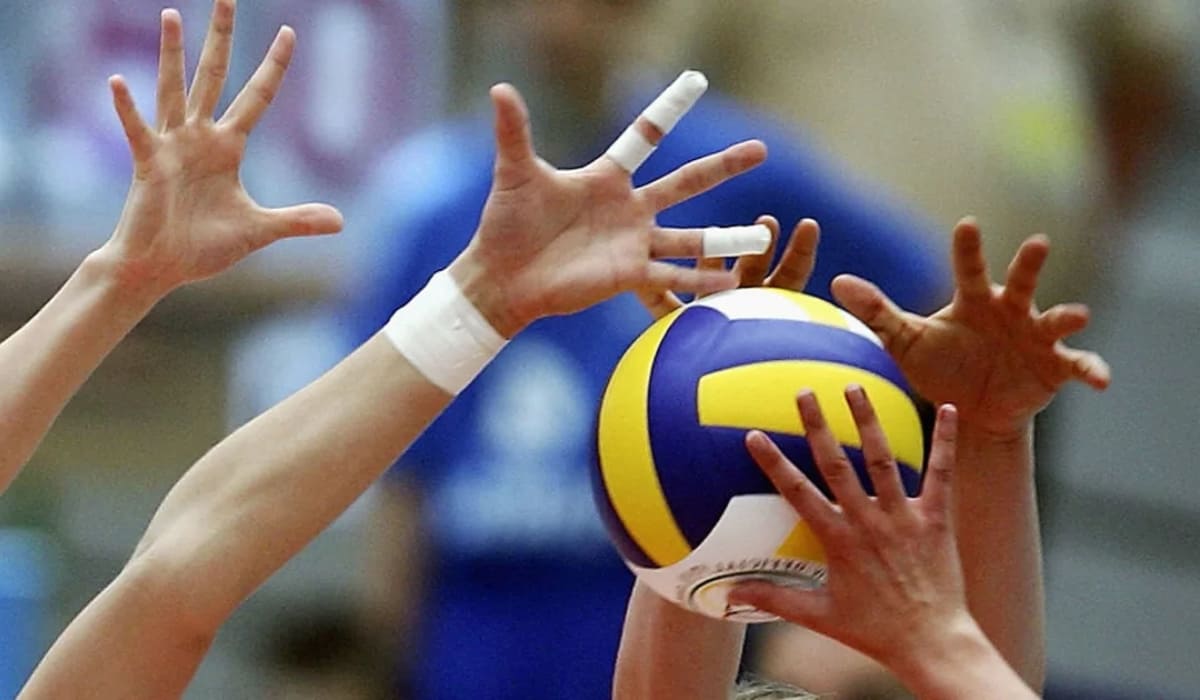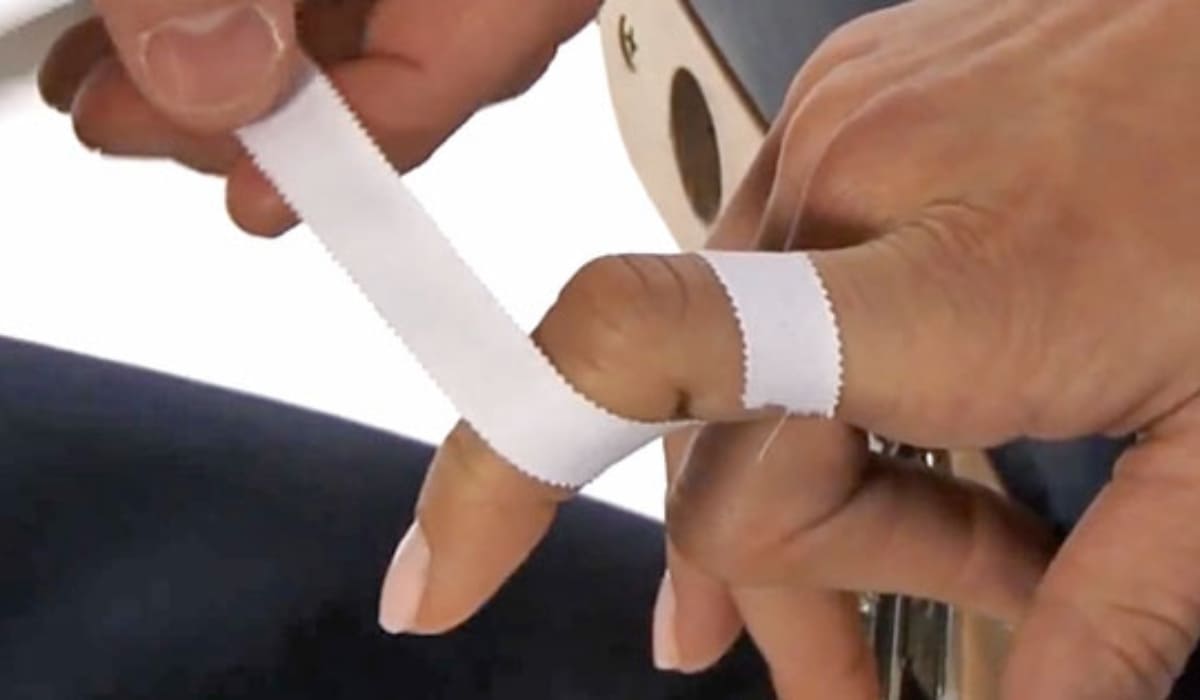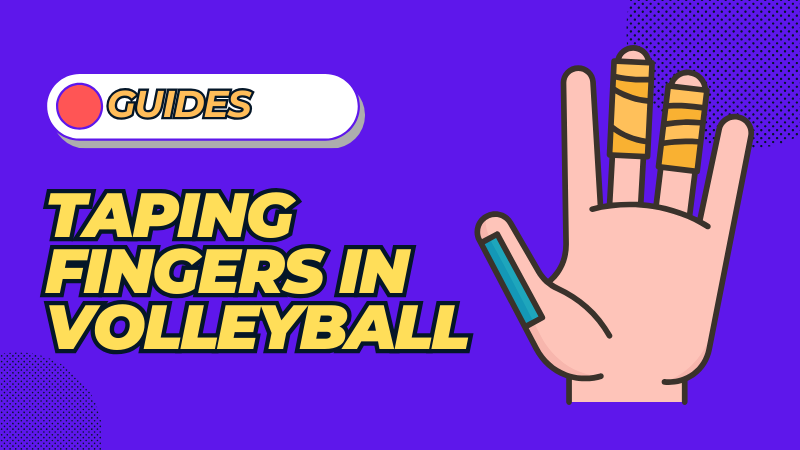In the high-intensity world of volleyball, the players are no strangers to injuries. Among the most vulnerable parts of a volleyball player’s body are their fingers, constantly exposed to the risk of sprains, cracks, and painful collisions with the ball. Taping the fingers, a common professional practice addresses some of these concerns.
Finger-related injuries account for about 44% of all volleyball-related injuries, which sends a clear message about the significance of finger protection in the game. From powerful serves to defensive blocks, fingers play a crucial role and endure tremendous stress.
So why do volleyball players tape their fingers? Taping serves multiple purposes: adding strength, protecting from cracks, or preventing painful bends. This article will take you through the reasons, techniques, and benefits of taping fingers in volleyball, giving insights that even seasoned players may find valuable.
Why Do Volleyball Players Tape Their Fingers?
Many volleyball players primarily tape their fingers to add strength and protect the finger. The practice helps prevent the fingertips from cracking and bleeding, providing extra support during gameplay, improving grip strength, and offering protection against sprains or injuries in volleyball.
In the intense environment of a volleyball match, fingers are exposed to various forms of stress. Powerful spikes, relentless blocks, and precise sets put immense pressure on the fingers. Taping creates a more stable joint, reducing the risk of bends and sprains. It is a shield against regular wear and tear, making it an essential practice for novice and professional players.
Whether buddy-taping two fingers together for support or using specific types of athletic tape for comfort, finger taping in volleyball has evolved into a sophisticated method to ensure players can perform at their peak without worrying about their fingers. It’s more than a preventive measure; it’s a strategy for maintaining the highest level of play.
Volleyball Finger Taping: Different Reasons

Transitioning from the fundamental reasons, it’s essential to delve deeper into the varied techniques and purposes behind taping a volleyball player’s fingers. These methods are more than preventive measures; they’re specialized strategies tailored to a player’s needs and the game’s demands.
Strengthening Techniques Using Tape
Taping fingers in volleyball isn’t just about injury prevention; it’s about enhancing performance. By applying tape, players can increase the strength and stability of their fingers, thus improving grip and ball control. It adds an extra layer of support, aiding in the prevention of strains and helping players to hit harder and block more effectively.
Protecting the Nail with Tape
Nail injuries might seem trivial, but they can cause significant discomfort during a volleyball game. By carefully taping around the nails, players can shield them from the hard impact of the ball. This protection prevents nails from breaking off and minimizes pain, allowing players to focus on their game.
Preventing Bends with Taping
A bend or twist in a finger can spell disaster for a volleyball player. Taping provides stability to the joints, making them less likely to bend abnormally during intense play. This method ensures that the fingers move as they should, without the risk of bending at improper angles.
Taping Techniques to Protect an Injured or Sprained Finger
Injuries are, unfortunately, a part of the game. Taping techniques like buddy taping, where two fingers are bound together, can support an injured finger. These methods help in the rehabilitation process, ensuring that an injured finger heals properly while still allowing some level of play.
Preventing Jams by Taping Fingers
Jammed fingers are a common problem in volleyball. Taping creates a rigid structure around the joint, reducing the risk of jams and sprains. Whether blocking a spike or reaching for a save, taping gives the player confidence that their fingers are safeguarded, allowing them to play without holding back.
Positions in Volleyball Where Fingers Should Be Taped

Building on the multifaceted aspects of finger taping, it becomes crucial to identify specific positions within the game where taping is most beneficial. In volleyball’s dynamic and fast-paced world, two areas stand out where the proper application of tape can make a significant difference: Blocking and Defense.
Blocking
Blocking is a vital part of volleyball, where players use their hands to stop or slow down the opponent’s attack. The fingers are at the forefront of this action, absorbing tremendous force. Taping the fingers provides extra support and minimizes the risk of injury. It allows players to block confidently, knowing that their fingers are secure, enabling them to respond quickly to powerful spikes without hesitation.
Defense
Defensive players in volleyball are consistently at risk of finger injuries due to their roles in digging and receiving hard-hit balls. Taping the fingers adds a layer of protection and enhances grip strength, a crucial aspect for defenders aiming for precision and control. This precaution allows defensive players to dive, reach, and react with agility without fear of finger sprains or jams. The assurance of taping empowers them to play to their fullest, contributing to a solid defensive line that could be the difference in a tightly contested match.
How to Tape Your Fingers for Volleyball
Taping fingers for volleyball is not merely a preventive measure; it’s an art that requires precision, care, and an understanding of the player’s individual needs. Getting it right is essential, as improper taping can hinder performance or cause further injury.
Let’s break down the proper way to tape your fingers for volleyball:
- Positioning the Hand: Start by placing the hand flat on a stable and hard surface. This sets the foundation for a smooth and controlled taping process.
- Applying Gauze: Fold the gauze neatly and place it between the fingers if you tap them together. If taping a single finger, wrap the gauze around that finger. This step is crucial, as it minimizes friction and prevents moisture from wicking up too much, ensuring comfort during play.
- Wrapping Athletic Tape: Take athletic tape and wrap it around the base of the finger(s) you wish to tape. Depending on the need, wrap it two to three times. Be mindful not to wrap too tightly, as it can affect mobility during play.
- Reinforcing with Extra Tape: For added security and protection, wrap an extra piece of tape between the joints of the affected fingers. This reinforces the taped area and further safeguards the fingers.
It’s worth noting that these instructions offer a general guideline. Every player’s needs might vary, and it’s advisable to consult a coach, trainer, or medical professional to ensure the taping is tailored to the player’s specific requirements. Proper taping can be a game-changer, boosting confidence and enabling players to give their best on the court, knowing their fingers are well-protected and supported.
Which Volleyball Finger Tape Should You Use?

Selecting the right volleyball finger tape is a decision that goes beyond mere preference. It’s a strategic choice that contributes to both performance and safety. The type of tape you choose can have a direct impact on your game, so let’s delve into the factors to consider when selecting the ideal finger tape for volleyball:
- Material: Most volleyball players opt for athletic tape or medical cloth tape. Athletic tape is typically more rigid, providing robust support. Medical cloth tape, on the other hand, may offer more flexibility and breathability.
- Width: The width of the tape can make a difference in how it’s applied and its effectiveness. Wider tape may provide more support but can be more cumbersome. Narrower tape may allow for more precise application, especially for buddy taping.
- Adhesive Quality: A good adhesive ensures the tape stays in place during intense play. However, it should not be too harsh on the skin, as it may cause irritation or difficulty in removal.
- Comfort and Sensitivity: Volleyball players need to consider the kind of tape they use, especially if they have sensitive skin. Hypoallergenic tape that won’t irritate is often necessary. The comfort level, including how the tape feels during a game, is vital.
- Professional Recommendation: Sometimes, the choice of tape may be guided by a coach, trainer, or medical professional, especially if you’re recovering from an injury or have specific support needs.
- Player’s Experience and Position: Your playing style, position, and individual preferences can influence the choice of tape. A blocker might need a sturdier tape, while a setter might prefer something with more tactile sensitivity.
- Affordability and Availability: Practical considerations like cost and accessibility might also guide your decision. Always balance quality with affordability.
Remember, there’s no one-size-fits-all solution when it comes to finger tape. Experimenting with different types and consulting with knowledgeable professionals can lead you to the most comfortable tape that enhances your play. Choosing the right tape isn’t just a minor detail; it’s an integral part of your preparation that can help you play your best game without worrying about finger injuries.
Should You Tape Your Fingers for Volleyball Practice?
Yes, taping your fingers for volleyball practice is a recommended practice. It helps improve grip and ball control and can prevent potential injuries. As in matches, the forces and demands on your fingers during practice are significant, so taking precautions like taping can provide important benefits.
Reasons for Taping During Practice
- Injury Prevention: Practice sessions in volleyball are often as intense as the matches themselves. Taping supports the fingers, reducing the risk of sprains, jams, and other common finger injuries.
- Consistency Between Practice and Games: If you tape your fingers for matches, doing the same during practice ensures consistency in feel and control. It helps build muscle memory and familiarity, translating into better performance.
- Recovery from Previous Injuries: If you’re recovering from a finger injury, taping during practice can provide necessary support and protection. This can aid in a faster and safer return to full playing capacity.
- Skill Enhancement: Taping can aid in developing specific skills by enhancing grip strength and control. This is especially important for positions that require delicate ball handling, like setters.
In summary, taping your fingers for volleyball practice is more than a precautionary measure. It aligns with the best practices that support optimal performance and safety. Whether you are a seasoned player or a beginner, taping your fingers can enhance your volleyball experience, keeping you in top form on the court.
Conclusion
Taping fingers in volleyball is a common and crucial practice for various purposes. From strengthening techniques to protecting against potential injuries such as sprains and jams, taping plays a vital role in the performance and safety of a player. It not only aids in preventing finger injuries, which account for about 44% of all volleyball-related injuries, but also enhances grip strength and ball control.
Different positions in volleyball, like blocking and defense, may benefit from taping, and understanding the right techniques and types of tape to use is essential. Taping is encouraged in practice sessions, aligning with best practices that promote optimal performance. Whether in a game or practice, taping your fingers can significantly impact your volleyball experience, providing the support, protection, and control needed to excel on the court.
FAQs
What Does Tape on Your Fingers Do for Volleyball?
Taping fingers in volleyball provides extra support, helps prevent injuries, and improves grip strength and ball control. It can be particularly beneficial in strengthening weak joints, protecting against dry or cracked skin, and offering support during intense plays.
Should Volleyball Setters Tape Their Fingers?
There’s no definitive answer to this, as some setters prefer to tape their fingers while others do not. Taping may prevent injuries and provide some players a better grip on the ball, but individual preferences and needs may vary.
Why Do Some Players Tape Their Fingers?
Some volleyball players wear tape on their fingers for added support, especially if they have weak joints or previous injuries. Taping can also protect against dryness and cracking, providing a more comfortable playing experience.
Why Do People Tape 2 Fingers Together?
Taping two fingers together, known as “buddy taping,” supports an injured finger using an adjacent, uninjured finger as a “buddy.” It’s a popular technique to enhance stability and protect an injured finger during healing.
Does Taping Fingers Prevent Injury?
Taping fingers can reduce the risk of injury, especially when employing techniques like buddy taping. While it helps rehabilitate and support the finger, it’s essential to note that taping is not a foolproof guarantee against injuries. Proper precautions and techniques during play are equally vital to minimize injury risks.

